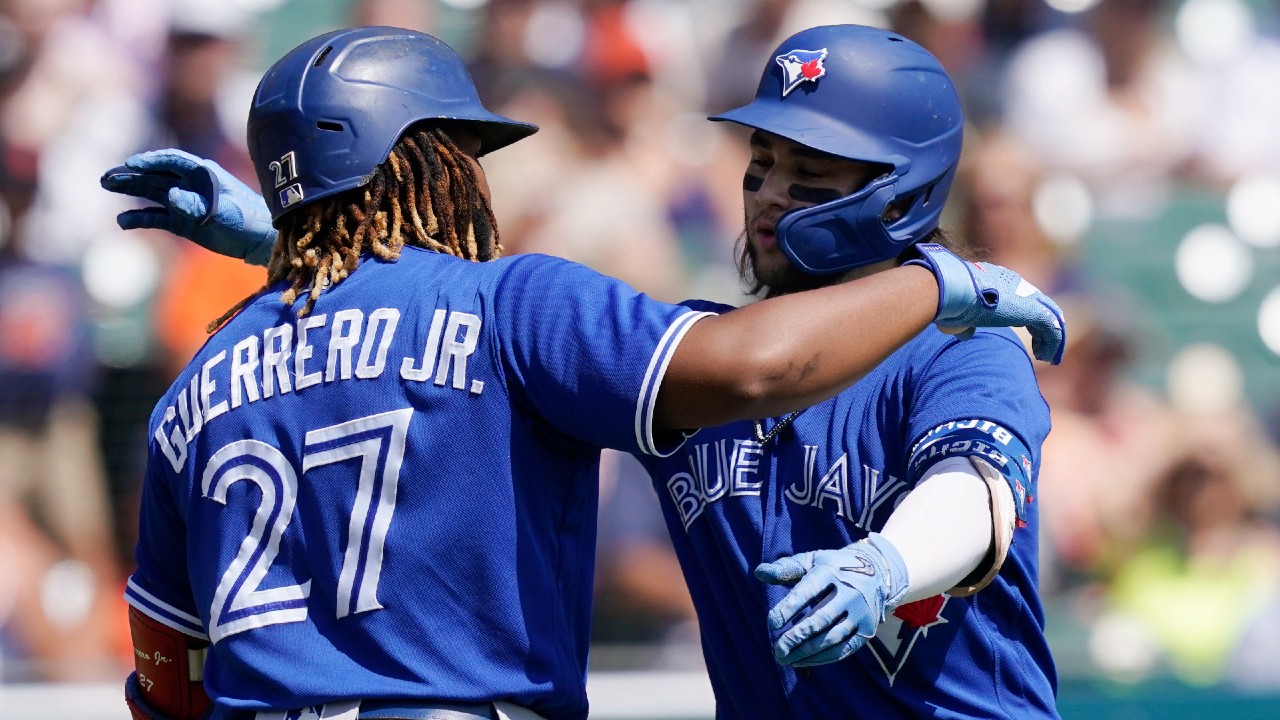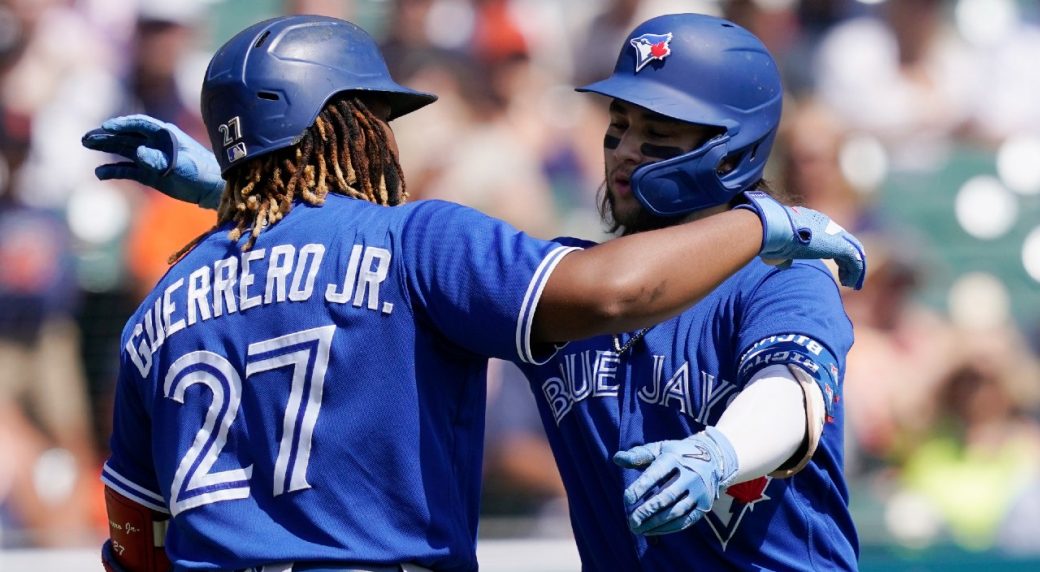

As the players and owners negotiate on MLB’s next collective bargaining agreement, it’s not yet clear how the new CBA will differ from the old document.
Reading the tea leaves, though, one change that seems likely is an expanded playoff format. More teams in the playoffs means greater broadcast revenue, plus improved late-season ratings and gate revenue for a larger pool of clubs that get to be in the hunt as opposed to playing out the stretch.
That makes expanded playoffs an extremely attractive proposition for the owners. While it’s less of a clear win for the MLBPA, it’s an extremely valuable bargaining chip the players are likely to use to gain concessions elsewhere in the negotiations.
For the Toronto Blue Jays — a team that missed the playoffs by a single game in 2021 — an incoming playoff format that allows more clubs to play October baseball would seem to be unambiguously good news.
Considering the quality of the team and the complex dynamics of the AL East, it might not be so simple. When trying to pin down the number of playoff teams that best suits the Blue Jays, there are different answers depending on the time horizon.
As a result, the question “what playoff format best suits the Blue Jays?” actually has three different answers.
Short Term (2022)
Best playoff format for the Blue Jays: 12 teams
How it suits Toronto: This one feels cut-and-dry. The Blue Jays barely missed the playoffs in 2021 and project to field a similarly strong team in 2022. If that’s the case, adding a little wiggle room would be helpful to avoid last season’s shortfall.
The Tampa Bay Rays and New York Yankees aren’t going anywhere, and the Boston Red Sox can’t be as readily discounted as they were prior to last season. There are also a number of things that went right for the Blue Jays in 2021 that they’ll be hard-pressed to replicate, such as: Marcus Semien’s production, Robbie Ray’s magical season (even with Gausman in the fold), the pristine health of Vladimir Guerrero Jr. and Bo Bichette, and Steven Matz’s strong production out of the back of the rotation.
On the flip side, Toronto should get more games from George Springer, full seasons from José Berríos and Alek Manoah, better bullpen performance, and the possible emergence of Gabriel Moreno, but it’s hard to know where that’ll all net out.
It seems like (barring some extremely dramatic pre-season additions) the Blue Jays will be in the same tier in 2022 as they were in 2021. They look like a strong club, but they won’t be the kind of clear division favourite that has the luxury of assuming they’ll be playing in October. The Blue Jays might not end up needing an expanded format to crack the 2022 postseason, but they’d be glad to have it.
Medium Term (2023-2025)
Best playoff format for the Blue Jays: 10 teams (aka the current format)
To want a playoffs that is more exclusive than inclusive, you have to be a very good baseball team — and that’s what the Blue Jays project to be in this time period.
The 2023-2025 seasons will be the last years the club definitely has Guerrero Jr. and Bichette under team control and they should be at their absolute peak in their early-to-mid twenties. It’s not just those cornerstones who are locked in, though. Springer, Gausman, Berríos, Manoah, and even more core-adjacent players like Jordan Romano, Cavan Biggio, Tim Mayza and Nate Pearson are also under team control.
Only a couple of players will be eligible to depart via free agency during this window like Hyun-Jin Ryu, Teoscar Hernandez, and Lourdes Gurriel Jr. Those are important players, but Ryu’s contract may be onerous by the time he’s done, and Randal Grichuk’s contract leaving the books will also free up some money.
As a comparison, here’s a list of key AL East players eligible to leave their clubs as free agents between the end of the 2022 and 2024 seasons by team (not including the Baltimore Orioles, for obvious reasons):
Tampa Bay Rays – Kevin Kiermaier, Corey Kluber, Mike Zunino, Tyler Glasnow, Manuel Margot, Austin Meadows, Ji-Man Choi, Yandy Diaz
Boston Red Sox – Chris Sale, J.D. Martinez, Nathan Eovaldi, Kiké Hernandez, Christian Vasquez, Nick Pivetta, Alex Verdugo
New York Yankees – Aroldis Chapman, Aaron Judge, Zack Britton, Luis Severino, Joey Gallo, Gio Urshela, Luke Voit, Gleyber Torres, Jameson Taillon
Many of these players will re-sign or be replaced competently (the Rays seems to have that trick figured out), but the fact remains that the Blue Jays’ primary rivals have cores that are barrelling towards free agency while Toronto’s most important players are locked up.
That could end up working against them if the Springer, Gausman, and Berríos contracts sour, but the young guys are so good that you have to like Toronto’s chance to build around them — especially if Moreno becomes another cornerstone. There’s a good chance the Blue Jays are the AL East favourites for at least one year in this span, in which case a tight playoff format works best for them.
Long Term (2026 on)
Best playoff format for the Blue Jays: 14 teams
How it suits Toronto: The reasoning here is pretty simple. It’s extremely hard to predict the future.
This far out, it’s impossible to know what the Blue Jays will look like, so it’s not safe to assume they’ll be a good enough team to look down on the idea of a wider playoff field. Presuming that the composition of the AL East is unchanged, the financial resources the Yankees and Red Sox throw around tend to make it a tough place to compete. The Rays’ team-building excellence may not be ahead of the curb by this point, but that can’t be ruled out, either. Even the Orioles could be in the mix by 2026.
The Blue Jays also have a couple of structural disadvantages that make it slightly tougher for them to compete, all things being equal. Taking in revenue in Canadian dollars and paying it out in American currency can be an issue at times, and there is some hesitation by certain players to sign in Toronto. Even if that has abated in recent years, it may never completely go away.
While a team like the Yankees or Los Angeles Dodgers may be able to throw a metaphorical dart at any point in the foreseeable future and assume they’ll be among MLB’s best teams, the Blue Jays can’t do the same — or at least not to the same degree. That’s the goal for them, but as it stands the greater margin for error a 14-team playoff format provides might do them some good.
How would an expanded playoffs impact the Blue Jays?
Source: Pinas Ko Mahal

0 Mga Komento